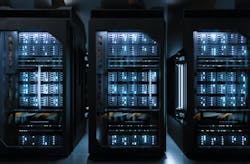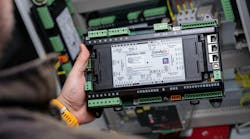Equinix Manages AI Supercomputing with NVIDIA as Cisco Fills AI Infrastructure Gap
Jon Lin, Equinix EVP and General Manager of Data Center Services and Matt Hull, NVIDIA VP Global AI Solutions, here answer questions about the companies' recently announced collaboration.
New capabilities announced in the partnership between Equinix and NVIDIA will be able to offer significant simplification in the management and deployment of AI infrastructure for customers, with a goal of making AI more accessible and manageable.
Focusing on challenges such as data security, operational costs, and the technical complexities of back-end upgrades, the partnership hopes to be able to provide a seamless, turnkey solution for businesses looking to harness the power of generative AI.
According to Charles Meyers, president and CEO of Equinix, "Our new service provides customers a fast and cost-effective way to adopt advanced AI infrastructure that's operated and managed by experts globally."
At the same time, Cisco and NVIDIA have announced an integrated AI infrastructure that will also give customers the opportunity to simplify management and deployment.
Of this partnership, Jensen Huang, founder and CEO of NVIDIA, said, “Working closely with Cisco, we’re making it easier than ever for enterprises to obtain the infrastructure they need to benefit from AI, the most powerful technology force of our lifetime.”
When it comes to deploying NVIDIA technology, it might sound like Equinix and Cisco are two companies announcing direct competition with each other -- but that’s not the case.
NVIDIA Facts of the Case
In working with NVIDIA, Equinix, with its operational experience, is offering the capability for customers to take the NVIDIA hardware that they are investing in, specifically the DGX AI Supercomputer infrastructure, and have it operated and maintained at an Equinix data center, by specially-trained teams of Equinix staff with the support of NVIDIA technologists.
The combination of data center experts and the presence of specially-trained NVIDIA DGX experts makes available to Equinix customers the skills that they need to maximize the value of their AI investment.
Cisco is taking a somewhat different approach to NVIDIA. In contrast, how does Cisco see their options?
Rather than jump on the bandwagon with companies finding ways to deploy the top of the line DGX supercomputer or the H100 GPUs that are NVIDIA's core offerings, Cisco is betting that businesses will want to add AI capabilities to their networks -- while not spending the money required to be absolutely cutting-edge.
So the Cisco approach involves the release of the Cisco and NVIDIA Integrated Data Center Solutions. Much in the way many networking architectures have been released in the past, there is now a jointly validated reference architecture between the companies.
The Cisco Validated Architectures for NVIDIA are designed to simplify the deployment and management of AI clusters at scale, with use cases ranging from virtualized to containerized environments.
The M7 generation of Cisco UCS rack and blade servers is now incorporating NVIDIA Tensor Core GPUS, which work for both training and inference as well as being usable in advanced high-performance computing deployments.
Notably, unlike the DGX AI supercomputer, which use InfiniBand interconnections, the Cisco deployments use Ethernet for interconnection, a technology very familiar to IT networking professionals.
With a streamlined solution offered to the customer, both Cisco and NVIDIA should see the benefit to their customers, making the addition of AI and ML-driver solutions more practical and easier to deploy.
With scalable automated AI cluster management, AI-driven management, and the addition of AI capabilities to the Cisco Observability Platform improving the utilization of real-time telemetry, businesses will have better insight and clearer options for improving customer and employer digital experience.
It's All About the Skills
While the technology tends to take center stage as the bright and shiny bit of both of these announcements, the biggest advantage that customers will get from both companies is in addressing their skills gap, necessary to deploy AI to their greatest benefit.
The learning curve and the cost of acquiring the knowledge necessary to get the most from an AI infrastructure is not insignificant, and with both these offerings, the vendors are taking that workload off their customers' hands.
For the vendors, the knowledge derived from their customers' operations will allow them to continually fine-tune their operations, resulting in benefits to all current and future users of their offerings.
About the Author



